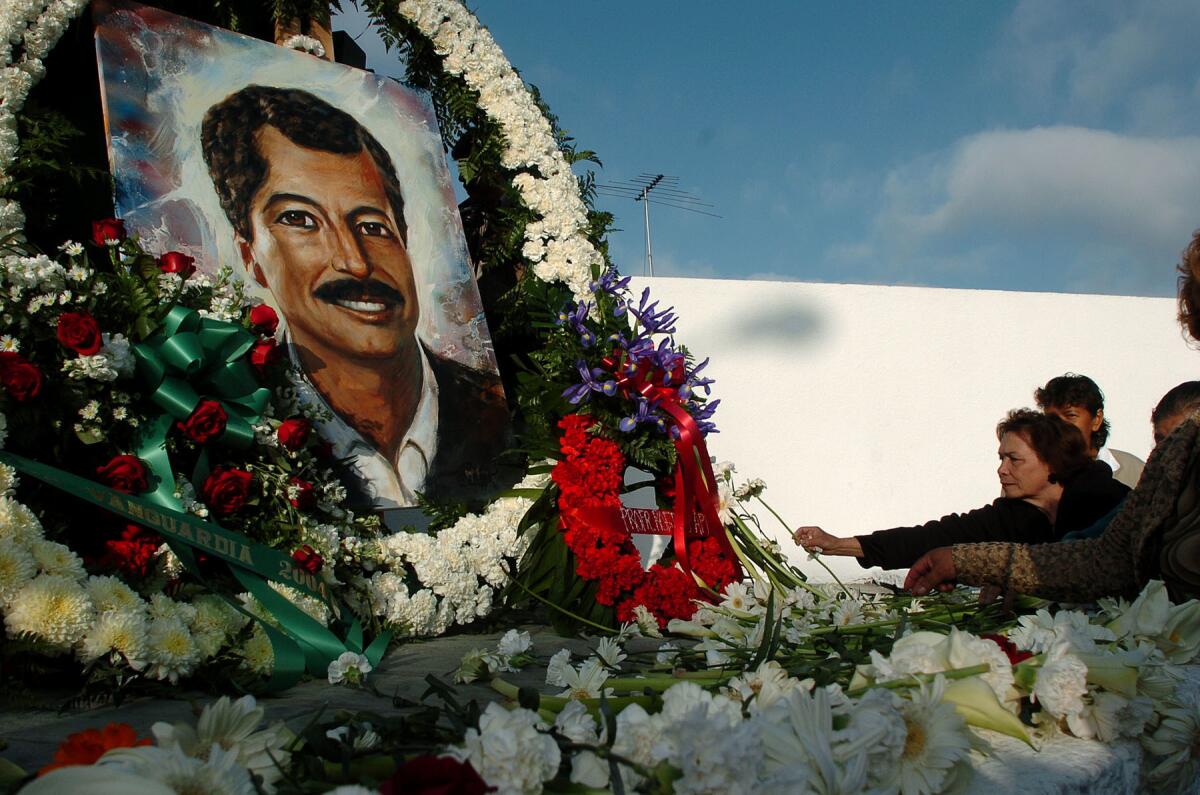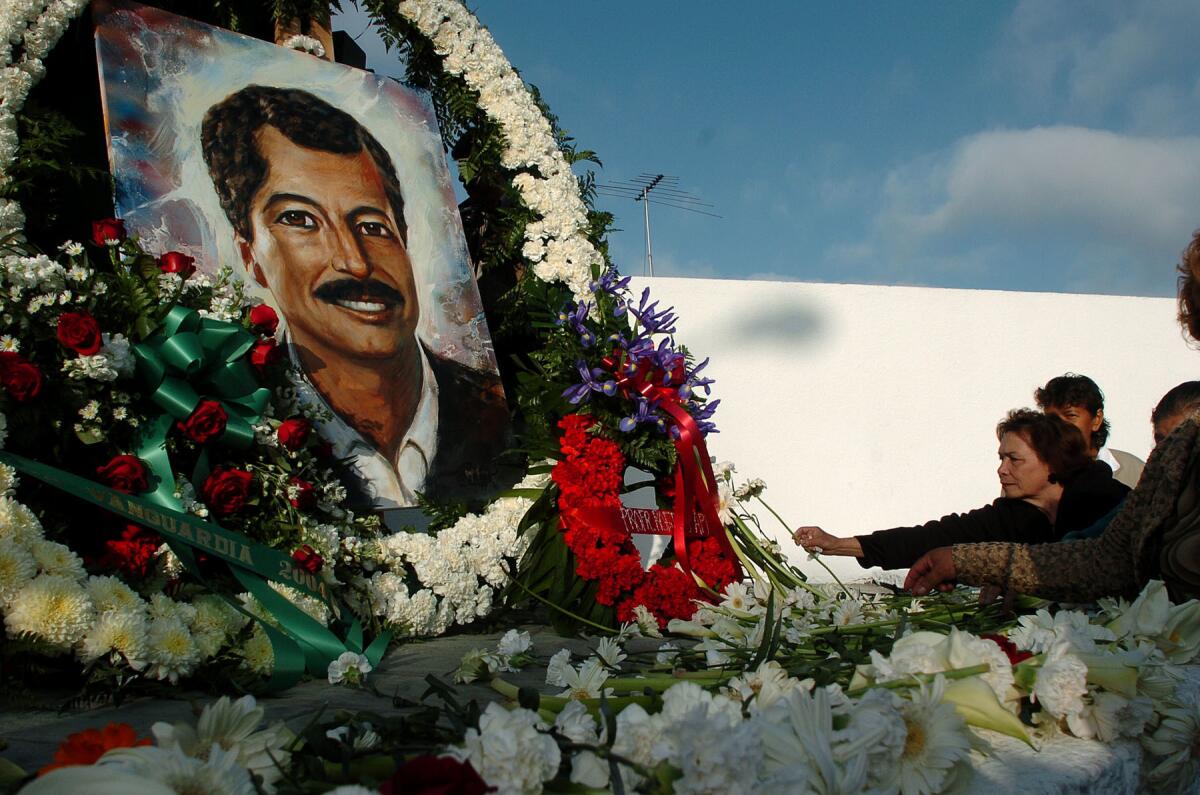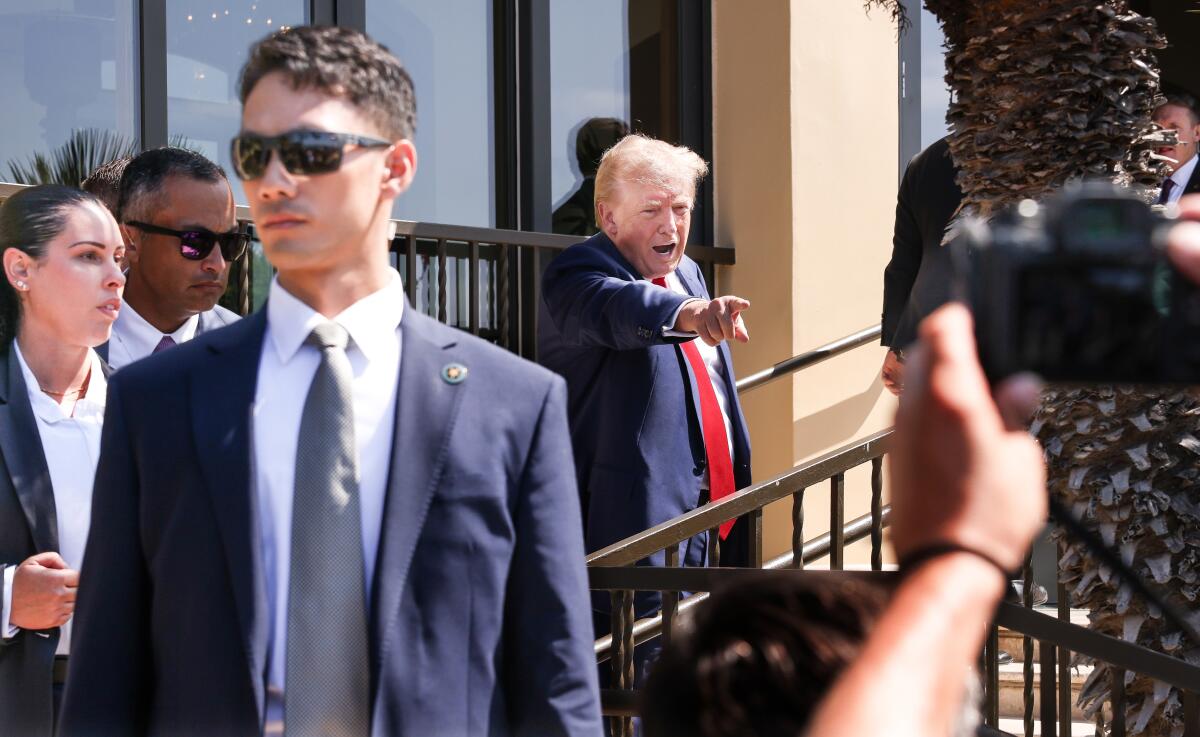MEXICO CITY — A breakthrough in the decades-long investigation of a political assassination that convulsed the nation?
Or a political stunt meant to distract from more pressing issues?
Those are the questions that emerged in Mexico after the arrest last weekend of an alleged “second shooter” in the 1994 assassination of presidential candidate Luis Donaldo Colosio, who was gunned down at a rally in the border city of Tijuana.
His slaying is widely regarded as one of the most consequential — and contentious— events of recent Mexican history.
Doubts and conspiracy theories have long swirled over Colosio’s killing, long blamed on a “lone gunman” who was captured at the scene. Many have compared the lingering uncertainty about Colosio’s demise to the never-ending debate in the United States surrounding the 1963 killing of President John F. Kennedy, an assassination also blamed on a lone gunman with ill-defined motives.
Many in Mexico have disputed the prevalent theory: that an apparently nonpolitical factory worker, Mario Aburto, shot the candidate twice at point-blank range as Colosio mingled with citizens during the campaign event.
“I looked up and saw the gun right in front of me,” Maria Vidal, who was walking with Colosio at the scene, told The Times in 1994. “Then I saw him fall to the ground. Blood was coming out of his head.”
Colosio was shot once in the head and once in the abdomen, feeding speculation that a second gunman was involved.

People place flowers on March 23, 2004, in tribute to Luis Donaldo Colosio during a ceremony marking the 10th anniversary of his assasination in Tijuana.
(David Maung / Associated Press)
Aburto, who says he was tortured into confessing, continues to serve a 45-year prison sentence.
The Colosio case generated tens of thousands of pages of testimony from hundreds of witnesses, along with books, documentaries and a TV miniseries on Netflix, all examining the question: What actually happened in Tijuana on March 23, 1994?
Speculation has pointed to everyone from political insiders to drug traffickers as the ones behind Colosio’s assassination, which contributed to a sense of upheaval in Mexico. The year 1994 opened with a Zapatista rebellion in the south, soon followed by Colosio’s stunning murder, and culminated with a December collapse of the peso, triggering an economic crisis.
More than a quarter-century after the killing, Mexican writer Cuauhtémoc Ruiz captured the ubiquitous sense of ambiguity in his 2020 book, “Colosio: Sospechosos y Encubridores” — roughly, “Colosio: Suspects and Cover-ups.”
The Colosio case even spawned its own version of the Zapruder film, the storied home-movie sequence of JFK’s assassination in Dallas. Video clips from the fateful 1994 rally show Colosio, his curly black hair flecked with confetti, shaking hands and signing autographs as he winds his way through a gleeful political crowd.
Suddenly, the image of a hand grasping a pistol emerges from the scrum. The gun fires directly into the right side of the candidate’s head. Chaos ensues.
On Saturday ,according to reports here, federal prosecutors in Tijuana arrested a former intelligence agent, Jorge Antonio Sánchez Ortega, who had been wanted since last year in connection with Colosio’s killing.
Sánchez Ortega, authorities say, was part of federal protection team assigned to Colosio’s rally in Tijuana’s Lomas Taurinas neighborhood, near the city airport. The agent was arrested shortly after the killing, but prosecutors now say he was freed and whisked away as part of a cover-up. The agent’s clothing was stained with the victim’s blood, and ballistic evidence indicated he had fired a weapon, authorities say.
His new arrest stems from a bombshell about-face last year by the office of Mexico’s attorney general, which abruptly retreated from the lone-gunman allegation. Instead, prosecutors endorsed the hypothesis of a second shooter and named as a suspect “Jorge Antonio S.,” now identified as Sánchez Ortega.
But the former agent’s arrest has left more questions than answers. Prosecutors have provided no overarching theory on why Colosio was targeted, and who was behind his slaying.
Neither the ex-agent or his lawyer have commented since his arrest.
Jesús González Schmal, attorney for Aburto, the convicted assassin, hailed the arrest as a step toward clarifying what really happened to Colosio.
“This will open a horizon of knowledge about what occurred 31 years ago,” the lawyer said in a television interview.
But some labeled the arrest a thinly disguised attempt to distract people from more pressing current issues of crime and corruption.
The government of President Claudia Sheinbaum is using the memory of Colosio “to cover up its ineptitude,” Alejandro Moreno Cárdenas, president of the opposition Institutional Revolutionary Party, or PRI, declared on X. The president, he said, “has no shame and no idea of how to govern.”
At the time of his slaying, Colosio was the presidential candidate of the PRI, which governed Mexico in authoritarian fashion for most of the 20th century. He was on track to be elected Mexico’s next president a few months later.
Colosio, 44, was seen widely viewed as a charismatic and progressive voice inside the rigid hierarchy of the PRI. He vowed to institute reforms and clean up deeply entrenched corruption and cronyism. Some have speculated that hard-liners within the ruling party were behind his killing — a theory long rejected by the PRI leadership.
After Colosio’s slaying, the PRI named Ernesto Zedillo, who had been Colosio’s campaign manager, as its candidate. Zedillo, a party loyalist and lackluster technocrat, won in a landslide and served a six-year term.
But, these days, the PRI is a weakened minority player in opposition to the government of Sheinbaum, elected under the banner of the now-dominant Morena party.
The arrest of an alleged accomplice in the Colosio killing comes days after another high-profile political assassination, this time of Mayor Carlos Manzo of the western city of Uruapan. He was gunned down at a Day of the Dead festival this month in what some call Mexico’s most sensational political assassination since Colosio’s slaying.
The killing of Manzo — who assailed Sheinbaum’s government for not doing more to combat cartels — sparked massive protests in his home state of Michoacán, a cartel battleground. Many criticized Sheinbaum’s government for what they called its lax attitude toward organized crime, an allegation denied by the president.
A generation after his assassination, Colosio’s slaying remains an epochal event that continues to cast a shadow over Mexican politics.
Special correspondent Cecilia Sánchez Vidal in Mexico City contributed to this report.



